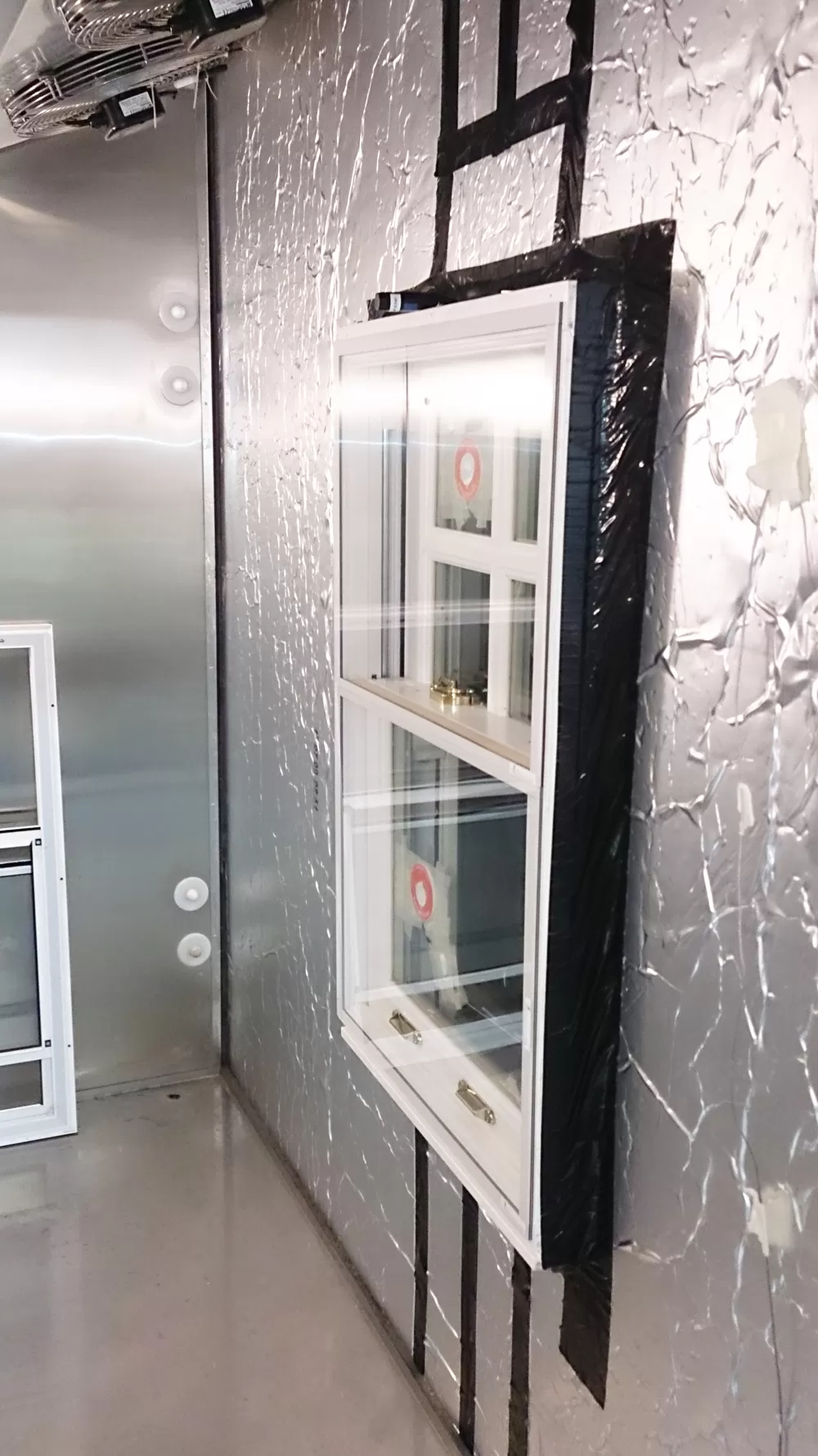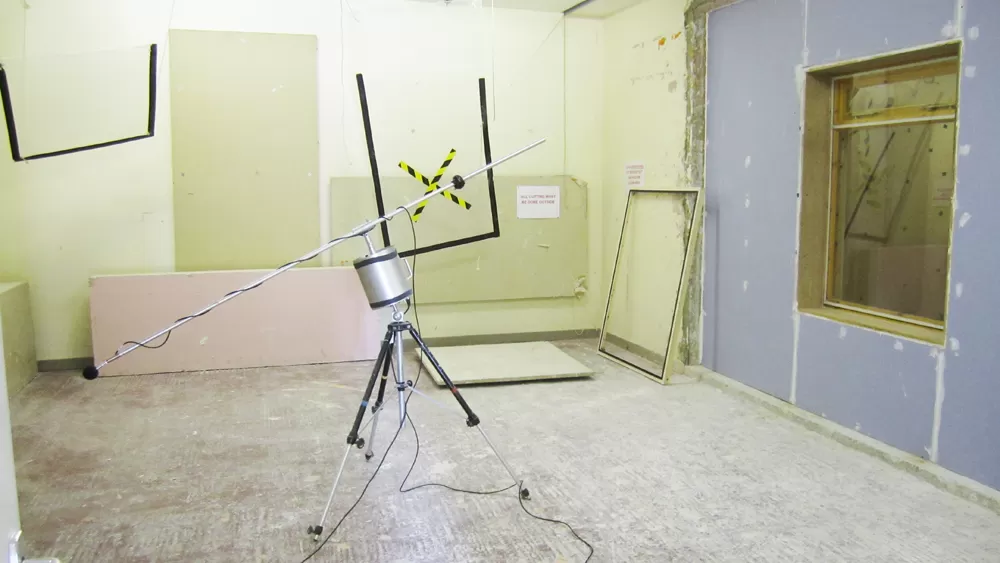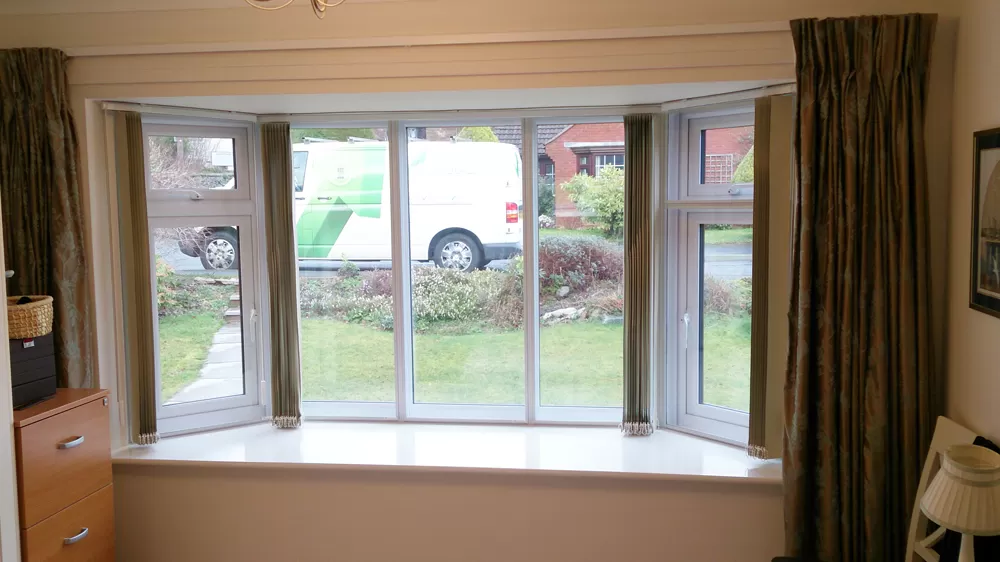Reviews
-
1 month agoExcellentService rating : From design to delivery, quick and professional service. Highly recommend.
-
1 month agoGet rid of the black edging.
-
2 months agoEasy to install, great instructions and discrete
Stuart Hearn -
2 months agoEasy to install on very problematic front door.
John Cunningham, GBR -
4 months agoExcellent serviceQuick turnaround. Personal service.
-
8 months agoA great solution for old housesVery helpful on the phone.
Geoff Hogan, Oxford -
10 months agoSecondary glazing in listed building in KentGreat service, good value, good product.
-
10 months agoExcellent solution for older windows...comfort improves, fuel cost lowers
-
10 months agoSimple, affordable and great option for the tricky shaped window
-
10 months agoGood service, effective product.It has made a noticeable difference to warmth and noise reduction.
Extra news
Veritherm case study – Extraglaze comes out top
Extraglaze was installed as part of a real life case study, in a real home, and the results measured and reported by Veritherm.co.uk
Green Homes Grant
Extraglaze at the National Trust offices, Hidcote Manor Gardens
February 2020We are very proud to have installed our magnetic secondary glazing at the National Trust's Hidcote Manor Gardens, in the staff offices – to keep everyone warm in rooms where other potential secondary glazing solutions had been considered out of the question.
Thermal insulation tests at Coventry University
In April 2014 we received confirmation that Extraglaze is a scientifically proven thermal insulation solution that beats a typical aluminium framed alternative.


The university's Sustainable Buildings Future Project used their Environmental Chamber to compare Extraglaze with an aluminium-framed, glass-pane secondary glazing system...
...Extraglaze came out the clear leader.
With both systems tested on a single glazed sash window the U-value for Extraglaze proved 11% better (2.20W/m²) than the alternative product.
We already knew that Extraglaze would be a better solution to deal with condensation, and the tests confirmed it. In a humid room test (60%RH), with below zero temperatures outside (-5 and -10ºC), Extraglaze was an impressive 78% better.
Extraglaze put to the test in the Environmental Chamber
Sound insulation tests at the Building Research Establishment

In July 2013 a large timber framed window (1.3m² of visible glass) was installed in the Building Research Establishment's (BRE) Horizontal Transmission Suite, and tested against an aluminium framed glass secondary glazing system. A wide range of tests were made, to see how secondary glazing could not only improve a single glazed window but even a double glazed window.

Extraglaze put to the test in the Horizontal Transmission Suite

To summarise the results both systems were rated "good" as a sound insulator for noise problems. We learned in particular that smaller panels do best, being more rigid, and the larger the gap, between the original window glass and the Extraglaze, the better. What surprised us most was that it didn't seem to make much difference whether the original window was double glazed or single glazed.
Proof in practice
In January 2014 Extraglaze was installed onto brand new triple glazed UPVC bay windows in a home by a main road. The triple glazing had been installed to cut the road noise but had proven ineffective. However, with the addition of Extraglaze road noise was almost completely eliminated.

And news from customers...
We have an ever increasing number of fabulous testimonies from our customers, which can be seen in the many reviews they have left on Feefo. It is clear that our customers enjoy their homes much more now than they did before Extraglaze was installed, being much warmer and much quieter.
For more information about Extraglaze please view the information in this site or contact us on the number above.
If you are an engineer or architect please contact us to discuss the results of tests in more detail.
Templating Guide - for shaped and out-of-square panels
Yes, we know it does because...
- we have had it tested scientifically at Coventry University - simply ask if you wish to read the report
- our customers tell us it does (see first hand testimonials in our Reviews pages)
Did you know, for example, that the acrylic glazing we use has one fifth the rate of heat transfer when compared to glass. This means that Extraglaze Secondary Glazing tends to stay much closer to room temperature. Whereas had we used glass it would stay cold, and be prone to condensation. In short, a "glass-in-aluminium-frame" type of secondary glazing is not a solution if you wish to tackle condensation. But Extraglaze Secondary Glazing is.
But... lots of things can be at work to cause your condensation problem, and sometimes these are too many and too severe for Extraglaze Secondary Glazing to solve all by itself.
Of course, please note, while Extraglaze Secondary Glazing can stop water condensing on the inside of your windows, it does not stop condensation on other surfaces in your home! When condensation is rife, or persistent then we recommend urgent action, most of it very simple and practical - please read our other article How to Stop Condensation.
If, after Extraglaze has been installed, you are still getting condensation in the gap please refer to our FAQs page, not far form the top: Does Extraglaze stop condensation?
Did you know...?
- Condensation usually appears worse on upstairs windows, because:
-
- heat (and steam) rises
- the rooms upstairs are probably not heated like the living spaces are downstairs
- that's where the occupants spend most of their time (sleeping!), and add dampness to the air, as they breathe.
For this reason, when condensation is a problem, we always recommend you insulate the upstairs windows as a priority.
- Condensation always finds a cold spot to land on. If you use Extraglaze Secondary Glazing to insulate some windows, but don't insulate the others, then condensation will gravitate to the uninsulated ones.
- Extraglaze Secondary Glazing can often stop condensation caused by the inside air, but it cannot stop dampness and water leaks coming in (into the cavity) from outside.
- Radiators should, whenever possible be located beneath a window, not against an internal wall. This is because the air circulating around a window will keep it dry, and also it dramatically reduces "chilled feet" syndrome.
- If you have a warm room, but still have cold feet then you have "chilled feet" syndrome, consequence of having radiators installed in the wrong places. It is normal to turn up the thermostat to compensate. However, this will add considerably to your fuel bill, so beware! In the long run, not only can it work out cheaper to have a plumber relocate your radiator/s, but you will feel so much warmer if you solve this problem, and enjoy warm feet!
Water or damp air in the cavity?
It is quite common for condensation to appear in the cavity very soon after Extraglaze Secondary Glazing is installed. There are two reasons for this:
- the installation took place on a cold or damp day. A fitter will work so close to the window that his or her breath will condense on the external glazing, or simply "fill the air" that is trapped when the panel goes on. On very cold days there is nothing the fitter can do - it will get wet again just as fast as a cloth can dry it!
- the materials in the window frame might well be damp (from the condensation it suffered prior to fitting your Extraglaze Secondary Glazing). Now the following is good news: the secondary glazing has made a gap between the new and old glazing, and the cavity has started to work like a greenhouse, warmed by daylight. During the day any dampness starts to sweat out of the frame. This "sweating" effect is normal, and good for your window, because the window frame is drying itself out. Consequently the warmed air in the cavity will contain an increasing amount of moisture - and this will explain any ongoing condensation noticed inside the window. So, at night, or during a cold spell, this moisture will condense onto the glazing. Later in the day you may notice it has evaporated, but it is still within the cavity. You may see this same condensation appear again and again until you remove the moist air.
Happily both of the above are temporary, but do need a little effort to resolve. The solution is to remove the panel on a dry day, when the room is well ventilated and give the glass a wipe. Next, a simple waft of dry air into the cavity is all that is needed. A wrong day to do this would be while you are drying washing indoors, even using a tumble dryer, or there are other reasons for the room to already contain damp air.
In more severe cases you might have water seeping into the window frames from outdoors, in which case you need to deal with the cause. The common causes are:
- a gutter is clogged, and water is dripping or running over, or splashing somewhere near the window
- the paint is not in good enough condition to protect it from the weather
- there are gaps in the frame, allowing water or damp air in
Good maintenance will save you money and your windows
When you find water in the cavity then it is essential to take the above action to stop the problem. If you do not then your window could become badly damaged, by rot, black mould, or swelling. The natural cycle of wetting and drying causes, in turn, swelling and shrinking. These eventually weaken and breaks the joints. Furthermore swelling will cause you to fight to get the windows open, which will be harmful. The window must be allowed to dry out and then must promptly be painted to a professional standard. Otherwise the window will soon be in need of a costly repair.
Extraglaze Secondary Glazing is frequently a really excellent system for tackling condensation (Extraglaze Secondary Glazing really works!...). However, please consider that, while it can stop the humid air condensing on your windows, it is not a cure for humid air!
So please take some time to learn more about the root causes of humid air in your home. At the same time you will learn how to prevent condensation manifesting itself in all sorts of other places as well.
Dealing with the causes of condensation
Can you do anything to manage condensation in your home? Well in a word, yes. There are lots of measures, some obvious, some less so.
Firstly, ask yourself why your house gets damp in the first place. The main culprits are these:
-
- a busy, steamy kitchen
- laundry hung over the radiators
- long steamy baths and showers
- regular use of a steam iron
- a house somewhat full of people, especially overnight!
- as above, together with cold and draughty spots, usually in corners of outside walls and on windows.
If you recognise any of these in your home then you have a true need for taking precautions, and especially for more ventilation.
As a quick fix the most effective measure to deal with condensation immediately is to use a window vacuum (window vac). If condensation only appears sporadically, this might actually be the only remedy required (although of course it does not solve the need to insulate your windows).
Do you have thermal curtains or working shutters on your windows? If yes, then they are especially prone to collecting condensation because when these are closed the window glass, and even the secondary glazing, is denied the warmth of the room. Consequently the window will get very cold on winter nights. Any humidity near the windows will collect there so, when you open the curtains or shutters, you will see condensation there. A window vacuum is essential here every time this happens. Practiced daily this will help remove moisture from the room permanently, so it is generally good practice. You should not leave condensation to "disappear naturally" (evaporate) through the day, because that moisture will only come back, again and again, unless it can escape the room altogether. After vacuuming, if you have a radiator on under the window (this is explained in our next article, in the link below), then any minor residual smears of water will dry off quickly.
If you are having building works completed in your home then this will likely be the cause of severe condensation, which should go away after a while, providing your rooms are well ventilated for a period. Plastering and screeding especially, tiling and fresh paint on walls and ceilings would be relevant here.
An action list of essential remedies
Condensation is known to be bad for our health if it on surfaces that bring on mould, and it is bad for the health of your home. So here’s an action list you might like to work your way through.
- ALWAYS close doors on the rooms that generate steam
- If any rooms don’t have doors in the doorway (especially downstairs, and the kitchen!) then have doors fitted
- Get better ventilation. Fans should always take the steam OUTSIDE from the cooker and bathroom. Forget the “circulating air filter” type cooker hoods, as they have no effect in tackling steam
- Use lids on pots when cooking, and turn down the heat to a gentler boil
- Use your steam iron in a room with an extractor fan running. If you iron a lot, for example as a home business, then it has to be a good extractor fan
- Swap your extractor fan for a heat exchanger version (such as a Vent Axia heat recovery unit)
- Hang your washing outside rather than inside, whenever practical
- Increase the spin cycle speed on the washing machine if you can
- Use only a tumble dryer that extracts to the outside. Make sure the connection to the outside wall has not come loose, or it will leak into the room
- Add secondary glazing, or even triple glazing. Products like Extraglaze Secondary Glazing, don’t require you to replace your windows, and even pass the test on listed buildings. Tackling the upstairs windows must be your priority, even adding a layer of secondary glazing to a double glazed unit is practical
- Daft as it might sound, don’t seal the house so tight that it never gets a breath of fresh air! You’re maybe trapping all the damp inside, when it needs out! On warmer or sunny days why not let a good breeze come through for a short while
- Tropical fish tanks must be covered
- Wipe your windows dry as soon as you wake up. Don’t simply hang up the cloth to dry indoors – give it a good wring into the sink!
By tackling condensation not only will you live healthier, longer and more comfortably, so will your home!
Free remote surveys
We can survey your windows free of charge remotely, from our main office. With an everyday smart device we can offer this service and talk with you at the same time. You will need:
a smartphone, iPad/tablet/laptop with a camera
a good broadband connection beside your windows
We will guide you as we look together at each window, looking for any issues that need to be addressed, and also as you take measurements, which don't have to be precise. In most cases we can then calculate and give you a fixed price for the work. For some situations it may highlight the fact that we need to visit to carry out a detailed survey. Depending on your distance from us, there may be a charge for a site survey.
Use a local tradesperson to cut your costs
We are always looking for trades people to expand our network of fitters. We will train them to our high standards and credit them as Approved Extraglaze Secondary Glazing Installers. Once approved we offer access to a range of additional solutions we have developed over the years. Our fitters charge their own fees for installation. Consequently you will get a keen, locally delivered service at an economical price.
Alternatively please send us photos of your windows by email, to
We can then review your pictures and offer our best solution and guidance with how to measure.




